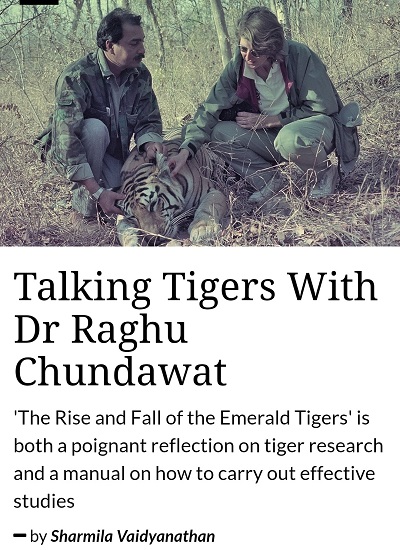‘The Rise and Fall of the Emerald Tigers’ is both a poignant reflection on tiger research and a manual on how to carry out effective studies.
As published in Nature inFocus on 09 October, 2019.
Dr Raghu Chundawat does not remember his first tiger sighting, but what he does remember is how commonplace it was to sight one of these big cats. “The unfortunate thing is how quickly we forget what the past was like – for the younger generation the current situation has become the new baseline, and in the absence of documentation we fail to understand what has been lost,” writes Chundawat in his book The Rise and Fall of the Emerald Tigers: Ten Years Of Research in Panna National Park.
The Status Of Tigers In India – 2018 report by the National Tiger Conservation Authority (NTCA) states that the tiger population in India is about 2,967 – a 30% increase compared to the previous report published four years earlier. This does not mean that we will be spotting tigers as commonly as Chundawat’s childhood days, in fact, the new report, despite its optimistic numbers, does raise a few concerns. For example, in Chattisgarh, tiger numbers have reduced from 46 in 2014 to a mere 19 in 2018. Books on tiger conservation which call a spade a spade and provide a wealth of information are essential in these times.
The Rise and Fall of the Emerald Tigers is based on Chundawat’s decade-long (1996-2006) research in Panna National Park. “When the tigers in Sarsika went extinct, very little was learnt since no one had documented the decline or studied in detail why and how it happened. In Panna, however, we were there to witness this undesirable event and could document the inability of the system to react appropriately to the situation,” writes Chundawat. Both informative and ruminative, the book highlights the importance of a long-term study and of understanding the ecological needs of the species. Initially, focusing on study methods and establishing how scientific data should be the basis for conservation, the book then reveals the dark side of conservational practices – highlighting mismanagement and political interference in this area.
Read the complete interview here.
